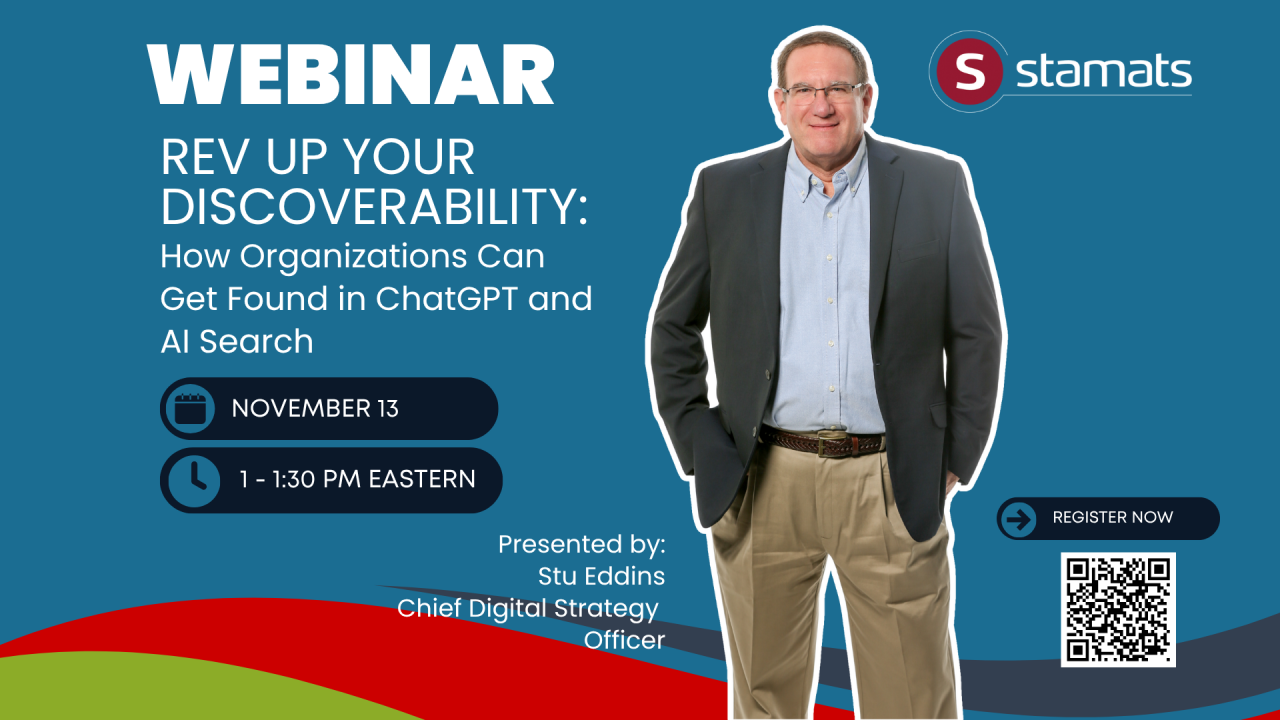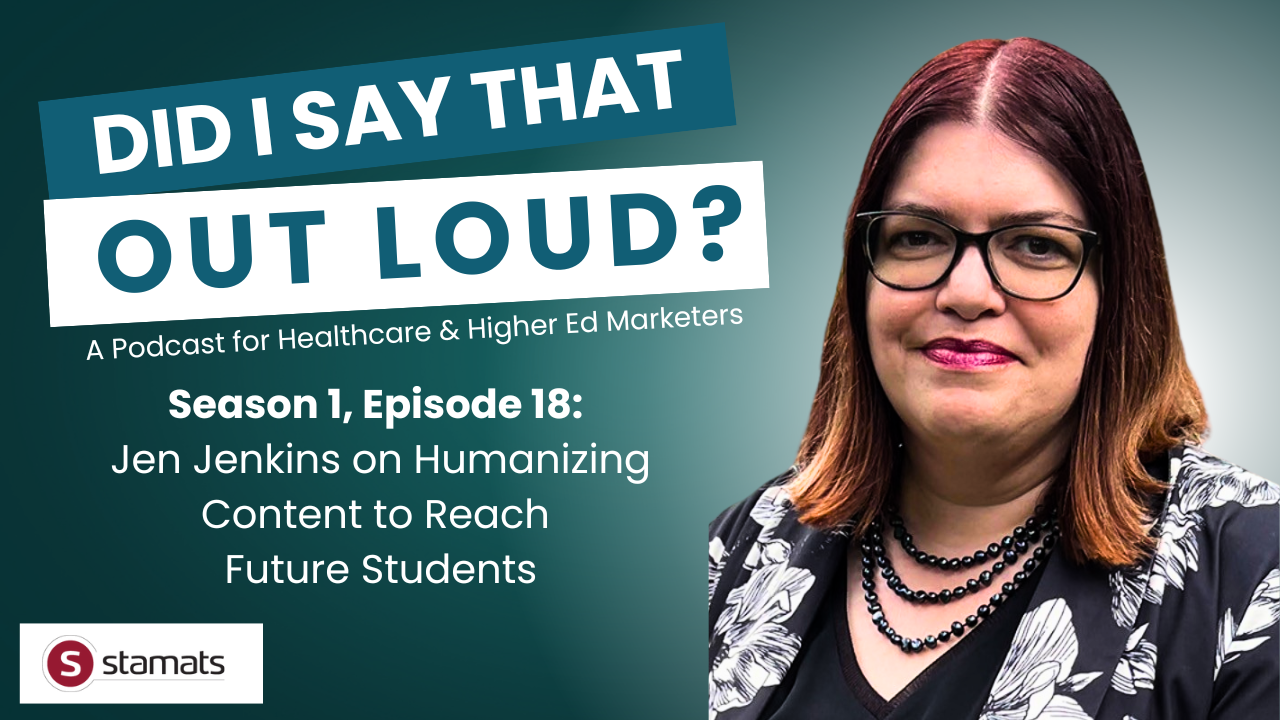Written by
on

Deciding to engage with juniors through freshmen in high school is a no-brainer—just do it. If your institution is capturing leads sooner than their junior year, you’re doing a fantastic job!
But let’s assume your college is like most institutions and is waiting to gather contact information until the student’s senior year. Then what? Does it matter if you wait? The answer is yes, it does matter.
Nurture means extended communication that provides timely and relevant information. The nurturing process should start earlier than their senior year. If contact information can be obtained, start nurturing high school students as freshmen.
In general, it takes three years to convert a lead (prospect) or inquiry solely through email. When I received this advice at a digital summit years ago, I was astounded by this timeline and thought it was rather ridiculous. However, this information proved to be excellent advice. I have watched email campaigns over the years prove the three-year rule to be true more than expected.
This wisdom is crucial to my decision-making for email campaigns. Instead of dropping leads that were not engaging with our messaging three or four emails into the campaign, our team strategized differently. Students we engaged with for three years had great results converting to applicants. So, how did we do it?
Share Data—Partner with the Early College Credit Department
Early college and dual credit students are crucial to recruitment. Developing a relationship with students who are receiving credits from your college can increase the probability of their converting to an applicant. This is a great resource to add to your recruitment list. Capturing student and parent contact information is the first step. With growing regulations on who we can send emails and communications to, it is also important to include parents in the communication plan.
Create a workflow with the college’s dual enrollment and early college credit department. As soon as students populate the department’s lists for taking courses, marketing and communications should recruit them. Requests for freshman through senior year are shared and include parent contact information, too. Fewer students come in as freshmen in dual credit. I always treat contacts that come in as high school freshmen as a bonus for extended communications to nurture them through their junior year.
Send the Right Communications
Communications for dual-enrolled students are a two-pronged approach. Communications should be going out on a regular basis for the students, helping them through processes for registering for class, accessing the student portal, and more. The first prong is the communications supporting processes and spoon-feeding the key points students need to know to complete paperwork, register for class, and more.
Doing this step well will build trust and a relationship with the student and their family. If this is done poorly, it gives the student and family a reason to look elsewhere, as they may conclude the institution has poor technology or does not prioritize the student.
Find out if you can help your college’s early college credit department with messaging. If they are already sending timely messages, there may be an opportunity to help with branding. If your institution can hone this part of the communications, it will build trust and a relationship with the student and their family. If these are established, engagement will increase as a junior when they start the process of shopping for a college.
The second prong is recruitment and the nurture track. Start students on their journey, nurturing them along, and share information that is timely, useful, and demonstrates how they fit in at your college. For example, sending them a link to a page on the college’s website with a complete list of dual credit classes available to them while attending high school is a great way to give them a shopping list of potential courses to further engage with your college.
Related reading: How to Recover When Student Messaging Goes to the Wrong Audience
Get Them on Campus
A car sales rep believes that if they can get you into a car to test drive, the opportunity to sell you a car goes up exponentially. The same rule applies to increasing the yield for applicants by getting students and their families on campus. Students who visit the campus are more likely to apply and attend. But how does one get them on campus if they are not ready and they can’t apply yet?
Invite them to campus! Send messaging with an invite and provide options to attend a theater production or a special festival. I currently work with a client who sends family STEAM events and car show announcements to get them on campus and engaging with campus contacts.
When working on campus, I would collaborate with our theater department and provide a discounted rate for students who were registered to attend a special event on campus. This provides a great incentive for families and students who may not be inclined to attend just for a tour. And don’t forget athletics. Collaborate with them to incentivize leads and inquiries to attend an athletic event. Examples like this help fulfill the fourth objective when recruiting: Is this place a good fit?
We’d love to help you accelerate your enrollment growth!
We have strategies to build your first communication plan or optimize your enrollment campaigns.
Launch Marketing Strategies for Special Sub-Groups
VIP events help make students feel special and are a great way to connect and build relationships with them. Up to now, most of the dual-enrolled students may have little to nothing to do with your college or university. It is possible that the students have not developed an affinity for your college through early college credit or dual credit. Providing a VIP event for this group is a great recruitment tactic to attract high-achieving students. This is an opportunity to focus on these students and give them the VIP treatment that can lead to better enrollment numbers. All the while, we are nurturing them along the path to attending post-graduation from high school.
Invite special sub-groups from high schools to visit the campus for a few hours or half a day. Create a special day for music and arts and invite choir and art classes to experience hands-on activities such as throwing clay or singing with the current jazz choir on campus. Create a plan to enmesh potential students and show them firsthand how they fit with your institution.
Related reading: 3 Steps to Build a Higher Education Communication Plan for Student Recruitment
Optimize Campaigns
Be careful about giving up on the campaigns you have built, starting with freshmen or sophomores in high school. Students will never check their personal or school email as often as we would like. Open rate may be low to begin with, but don’t lose hope. Maintain a focus of nurturing and helping them along as they learn about your college or university. Juniors may not be able to apply yet, but they are starting to think about what happens after high school. High-achieving students are looking to the future and are starting to visit campuses to take inventory of where they want to apply. They are taking standardized tests and selecting schools to which they want their scores sent.
Watch the engagement and data in campaigns, whether they are digital or mailers, and find places to pivot the communication to help them engage. If they are opening emails with messages about the average cost to attend, then they may want more on this topic as they start to pencil in financial plans. Strategize your communication flow to respond to behavior in your communications.
By the time your juniors convert into seniors, you are ready for a new flow of communications to convert your inquiries into applicants. Don’t be afraid to weave in the aforementioned messaging, but keep your eye on the prize. ALWAYS provide a link to apply. One cannot predict when a student is ready to take the next step. This is the year to hone the messaging and continue to answer the top four items on any student’s checklist:
- Do you have my programs?
- Can I afford it?
- How do I get in?
- Will I fit in?
Build a communication flow that nurtures the student and their family. Email us to explore ideas for achieving great enrollment numbers.


